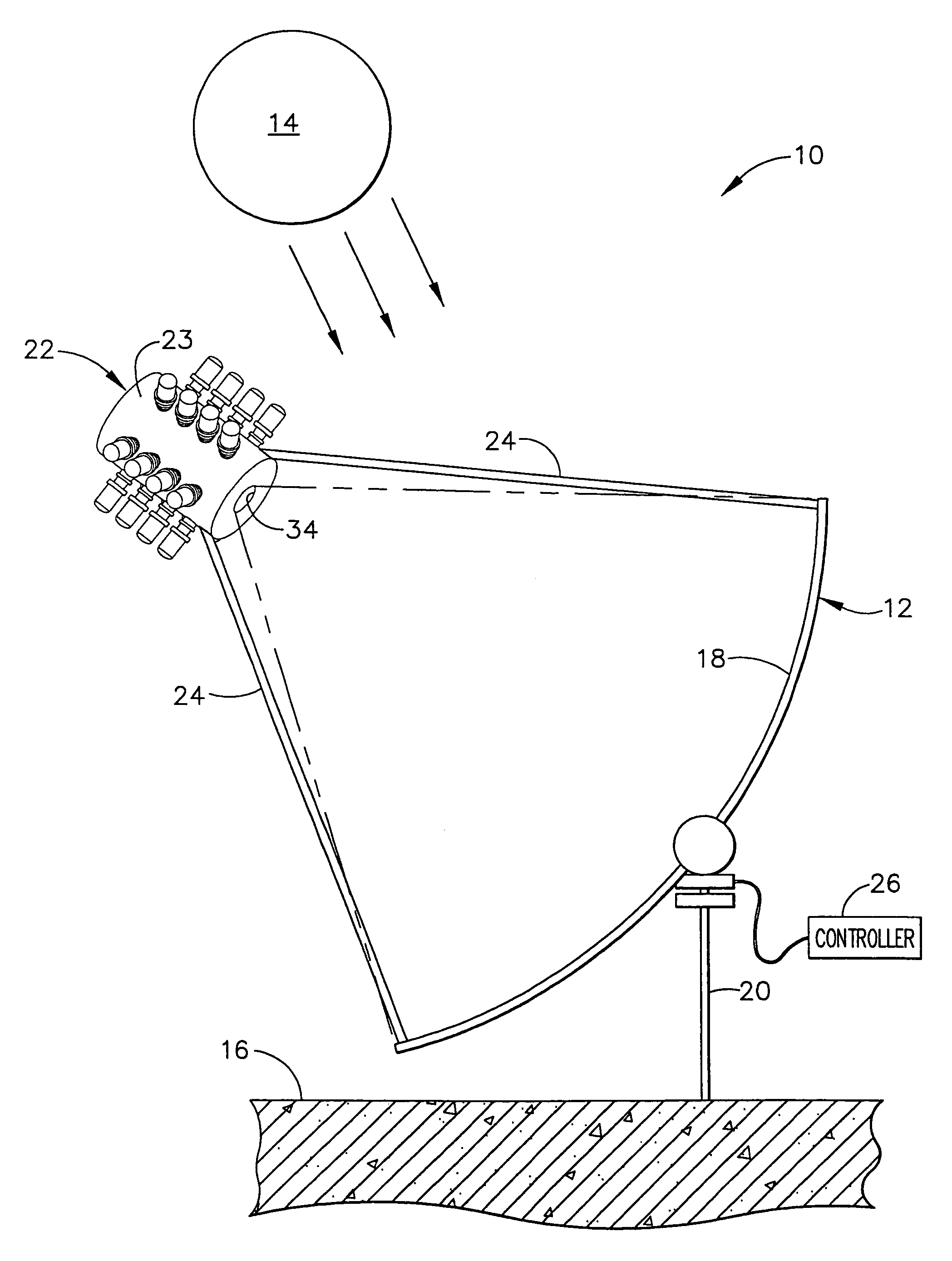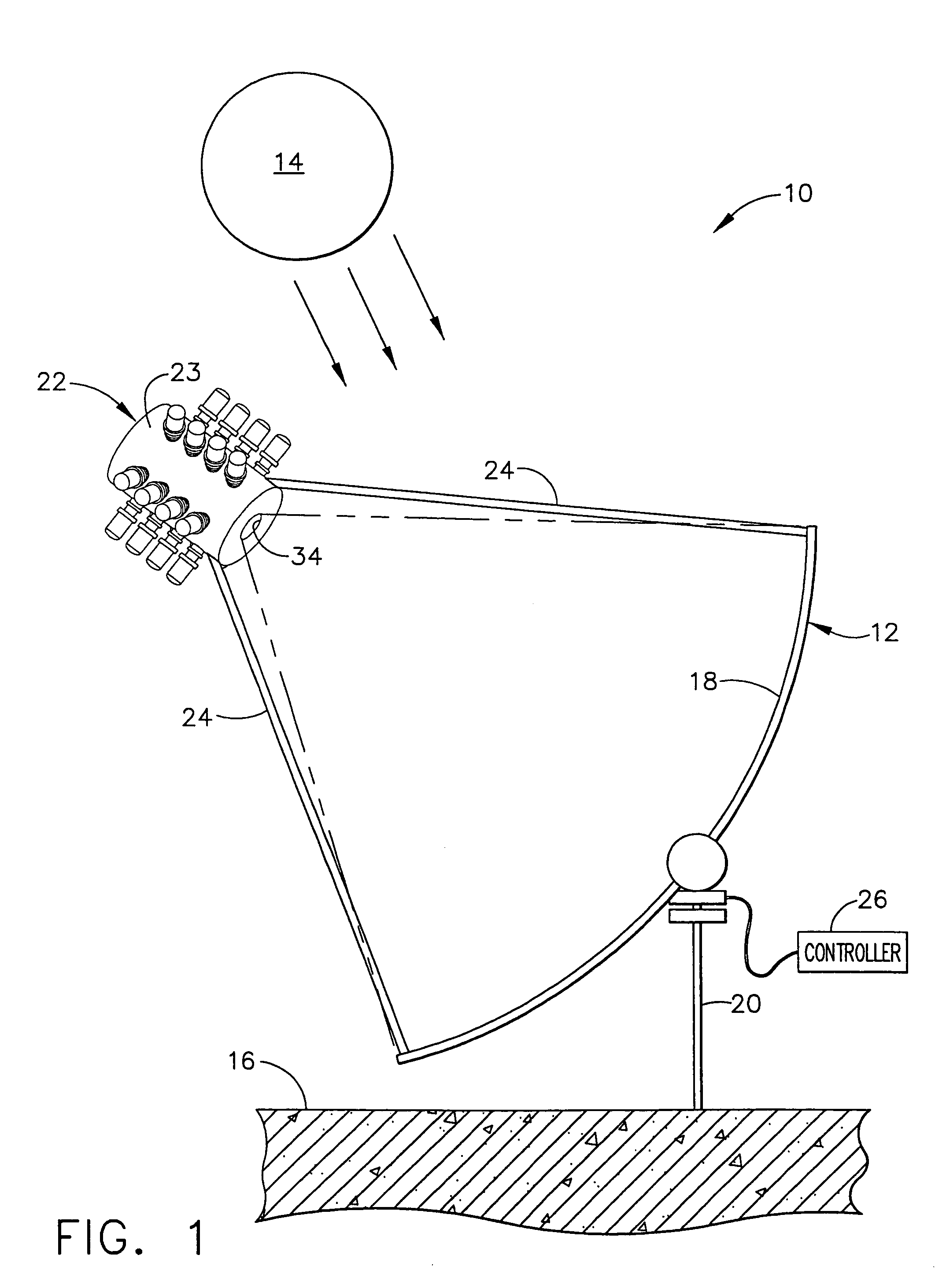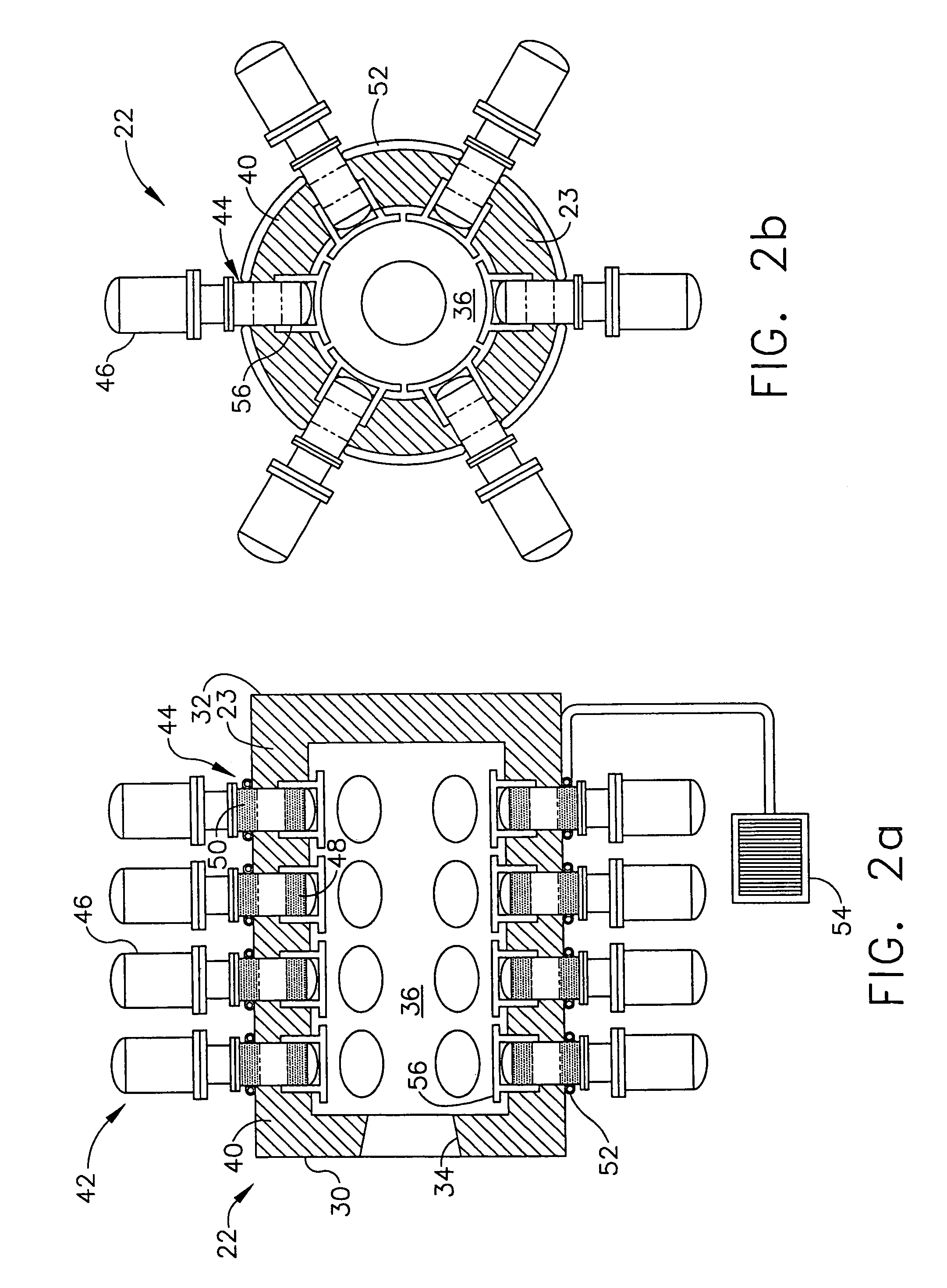Method and apparatus for solar power conversion
a technology of solar energy and solar energy, applied in the field of energy conversion, can solve the problems of increasing system amplitude, dramatically reducing efficiency, and never-ending task of producing electricity used by modern societies, and achieve the effect of increasing system overall efficiency
- Summary
- Abstract
- Description
- Claims
- Application Information
AI Technical Summary
Benefits of technology
Problems solved by technology
Method used
Image
Examples
Embodiment Construction
[0026]The following description of the preferred embodiment(s) is merely exemplary in nature and is in no way intended to limit the invention, its application, or uses. Although the following exemplary description describes a terrestrial power generation system using solar energy as the source of thermal energy, it will be understood that a non-terrestrial based system may also be formed. Furthermore, other sources of heat may be used within the scope of the present invention. In addition, although the following description relates specifically to the use of an engine using the Stirling cycle to convert thermal energy into electrical energy, it will be understood that various other engines or cycles can be used. Specifically, engines using various other cycles can be used with the systems described below include the Brayton cycle and the Rankine cycle. These, along with other cycles, can be formed into engines which use the thermal energy collected and concentrated according to the ...
PUM
 Login to View More
Login to View More Abstract
Description
Claims
Application Information
 Login to View More
Login to View More - R&D
- Intellectual Property
- Life Sciences
- Materials
- Tech Scout
- Unparalleled Data Quality
- Higher Quality Content
- 60% Fewer Hallucinations
Browse by: Latest US Patents, China's latest patents, Technical Efficacy Thesaurus, Application Domain, Technology Topic, Popular Technical Reports.
© 2025 PatSnap. All rights reserved.Legal|Privacy policy|Modern Slavery Act Transparency Statement|Sitemap|About US| Contact US: help@patsnap.com



